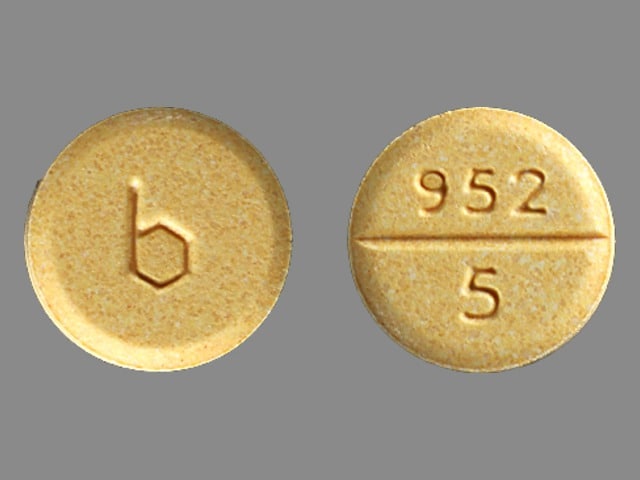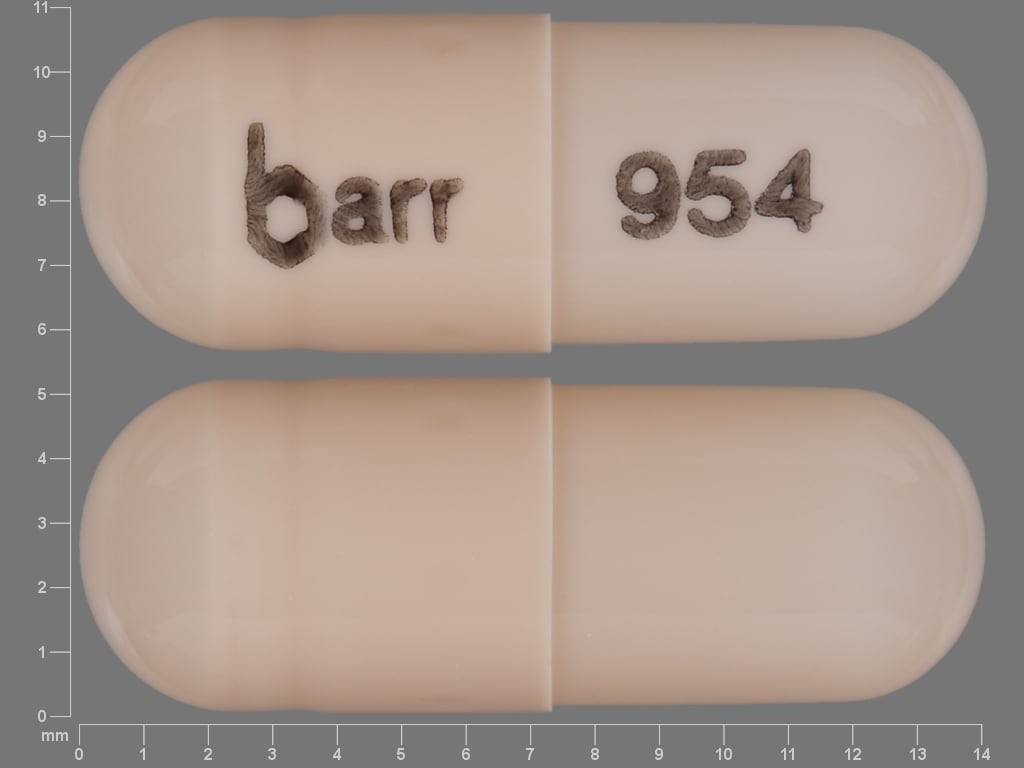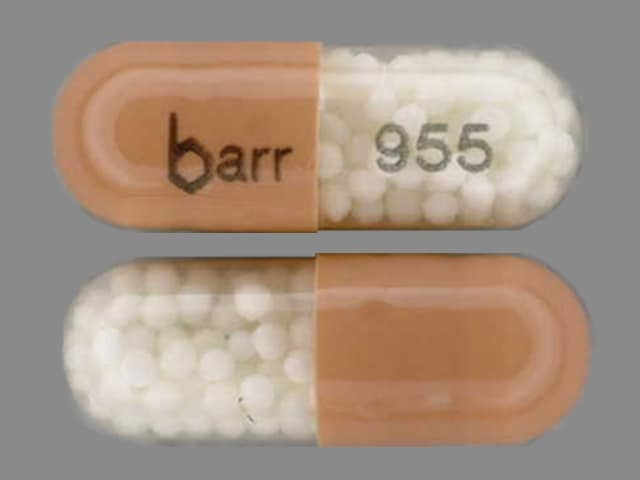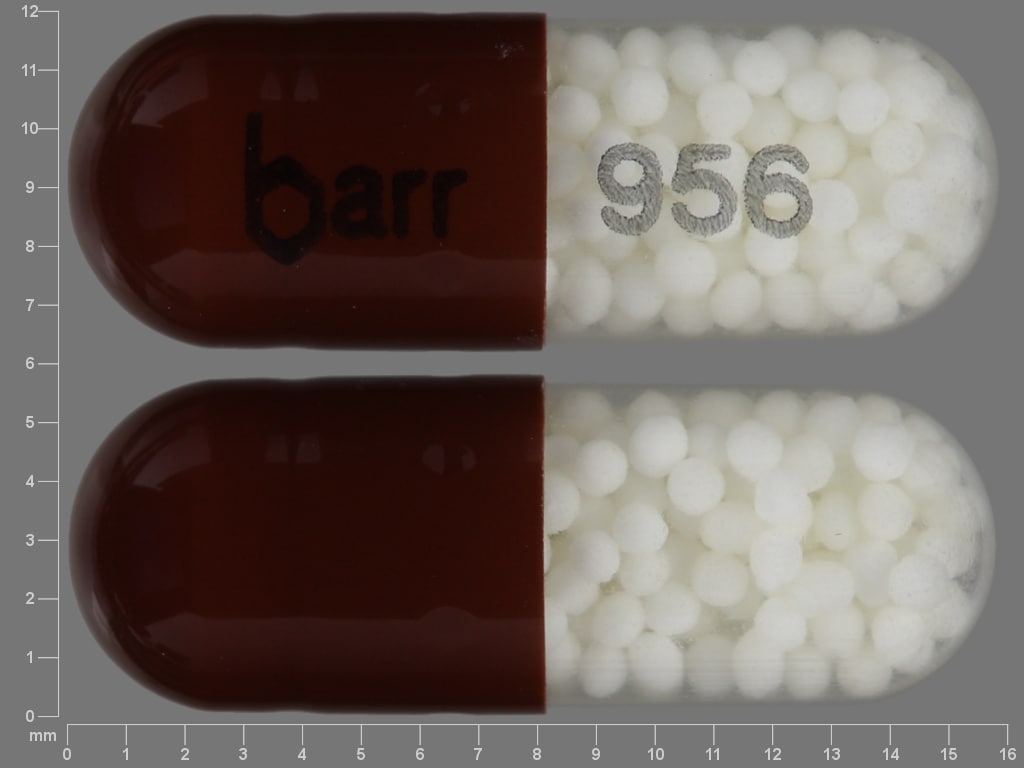Boxed Warning
Abuse potential:
Amphetamines have a high potential for abuse. Administration of amphetamines for prolonged periods of time may lead to drug dependence and must be avoided. Pay particular attention to the possibility of subjects obtaining amphetamines for nontherapeutic use or distribution to others; prescribe and dispense the drugs sparingly.
Cardiovascular events:
Misuse of amphetamines may cause sudden death and serious cardiovascular adverse reactions.
Dosage Forms
Excipient information presented when available (limited, particularly for generics); consult specific product labeling. [DSC] = Discontinued product
Capsule Extended Release 24 Hour, Oral, as sulfate:
Dexedrine: 5 mg [DSC] [contains brilliant blue fcf (fd&c blue #1), fd&c blue #1 aluminum lake, fd&c red #40, fd&c yellow #10 (quinoline yellow), fd&c yellow #6 (sunset yellow)]
Dexedrine: 5 mg [contains brilliant blue fcf (fd&c blue #1), fd&c red #40, fd&c yellow #10 (quinoline yellow), fd&c yellow #6 (sunset yellow)]
Dexedrine: 10 mg [DSC] [contains brilliant blue fcf (fd&c blue #1), fd&c blue #1 aluminum lake, fd&c red #40, fd&c yellow #10 (quinoline yellow), fd&c yellow #6 (sunset yellow)]
Dexedrine: 10 mg [contains brilliant blue fcf (fd&c blue #1), fd&c red #40, fd&c yellow #10 (quinoline yellow), fd&c yellow #6 (sunset yellow)]
Dexedrine: 15 mg [DSC] [contains brilliant blue fcf (fd&c blue #1), fd&c blue #1 aluminum lake, fd&c red #40, fd&c yellow #10 (quinoline yellow), fd&c yellow #6 (sunset yellow)]
Dexedrine: 15 mg [contains brilliant blue fcf (fd&c blue #1), fd&c red #40, fd&c yellow #10 (quinoline yellow), fd&c yellow #6 (sunset yellow)]
Generic: 5 mg, 10 mg, 15 mg
Solution, Oral, as sulfate:
ProCentra: 5 mg/5 mL (473 mL) [contains benzoic acid, saccharin sodium; bubble-gum flavor]
Generic: 5 mg/5 mL (473 mL)
Tablet, Oral, as sulfate:
Dexedrine: 5 mg [DSC], 10 mg [DSC] [scored]
Zenzedi: 2.5 mg
Zenzedi: 5 mg [scored; contains fd&c yellow #6 (sunset yellow)]
Zenzedi: 7.5 mg [contains brilliant blue fcf (fd&c blue #1), fd&c yellow #10 (quinoline yellow)]
Zenzedi: 10 mg [scored; contains fd&c blue #2 (indigotine), fd&c red #40, fd&c yellow #6 (sunset yellow)]
Zenzedi: 15 mg [contains brilliant blue fcf (fd&c blue #1), fd&c blue #2 (indigotine), fd&c red #40]
Zenzedi: 20 mg [contains brilliant blue fcf (fd&c blue #1)]
Zenzedi: 30 mg [contains fd&c yellow #10 (quinoline yellow)]
Generic: 5 mg, 10 mg
Pharmacology
Mechanism of Action
Amphetamines are noncatecholamine, sympathomimetic amines that promote release of catecholamines (primarily dopamine and norepinephrine) from their storage sites in the presynaptic nerve terminals. A less significant mechanism may include their ability to block the reuptake of catecholamines by competitive inhibition.
Pharmacokinetics/Pharmacodynamics
Metabolism
Hepatic to some degree by CYP2D6
Excretion
Urine; urinary excretion is pH dependent and is increased with acid urine (low pH)
Time to Peak
Serum: Immediate release: ~3 hours; Sustained release: ~8 hours
Duration of Action
Immediate release: 4 to 6 hours; extended release: 8 hours (Dopheide 2009)
Half-Life Elimination
Adults: ~12 hours
Use: Labeled Indications
Attention-deficit/hyperactivity disorder: Treatment of attention-deficit/hyperactivity disorder (ADHD) as part of a total treatment program that typically includes other remedial measures (psychological, educational, social) for a stabilizing effect in children 3 to 16 years of age.
Narcolepsy: Treatment of narcolepsy.
Contraindications
Hypersensitivity (eg, angioedema, anaphylaxis) or idiosyncrasy to amphetamine, dextroamphetamine, other sympathomimetic amines, or any component of the formulation; advanced arteriosclerosis, symptomatic cardiovascular disease, moderate-to-severe hypertension; hyperthyroidism; glaucoma; agitated states; history of drug abuse; during or within 14 days of stopping monoamine oxidase inhibitor (MAOI) therapy (including MAOIs such as linezolid or intravenous methylene blue).
Documentation of allergenic cross-reactivity for amphetamines is limited. However, because of similarities in chemical structure and/or pharmacologic actions, the possibility of cross-sensitivity cannot be ruled out with certainty.
Dosage and Administration
Dosing: Adult
Narcolepsy: Oral:
Extended release (capsule): Initial: 10 mg once daily; may increase dose based on response and tolerability in 10 mg increments at intervals ≥1 week; usual dosage: 5 to 60 mg/day once daily or in divided doses.
Immediate release (solution, tablet): Initial: 10 mg once daily; may increase dose based on response and tolerability in 10 mg increments at intervals ≥1 week; usual dosage: 5 to 60 mg/day in 2 to 3 divided doses; use intervals of 4 to 6 hours between doses.
Dosing: Geriatric
Refer to adult dosing; start at lowest dose. Use with caution.
Dosing: Pediatric
Note: Use lowest effective individualized dose.
Attention-deficit/hyperactivity disorder:
Immediate release tablets; oral solution:
Children 3-5 years: Oral: Initial: 2.5 mg once daily in the morning; increase daily dose by 2.5 mg increments at weekly intervals until optimal response is obtained; maximum daily dose: 40 mg/day in 2-3 divided doses; use intervals of 4-6 hours between doses. Note: Although FDA approved, current guidelines do not recommend use in children ≤5 years due to insufficient evidence (AAP, 2011).
Children ≥6 years and Adolescents: Oral: Initial: 5 mg once or twice daily with first dose in the morning; increase daily dose by 5 mg increments at weekly intervals until optimal response is obtained, usual range 5-20 mg/day; maximum daily dose: 40 mg/day in 2-3 divided doses; use intervals of 4-6 hours between doses
Extended/sustained release capsules: Children ≥6 years and Adolescents: Oral: Initial: 5 mg once or twice daily with first dose in the morning; increase daily dose by 5 mg increments at weekly intervals until optimal response is obtained, usual range: 5-20 mg/day; maximum daily dose: 40 mg/day in 1-2 divided doses; use intervals of 6-8 hours between doses; in patients >50 kg, a maximum daily dose of 60 mg/day in divided doses has been used (Dopheide, 2009; Pliszka, 2007)
Narcolepsy:
Immediate release tablets, oral solution:
Children 6-12 years: Oral: Initial: 5 mg daily, may increase at 5 mg increments at weekly intervals until optimal response is obtained; maximum daily dose: 60 mg/day in 1-3 divided doses: use intervals of 4-6 hours between doses
Adolescents: Oral: Initial: 10 mg daily, may increase at 10 mg increments at weekly intervals until optimal response is obtained; maximum daily dose: 60 mg/day in 1-3 divided doses; use intervals of 4-6 hours between doses
Extended/sustained release capsules:
Children 6-12 years: Oral: Initial: 5 mg daily, may increase at 5 mg increments at weekly intervals until optimal response is obtained; maximum daily dose: 60 mg/day in 1-2 divided doses; use intervals of 6-8 hours between doses
Adolescents: Oral: Initial: 10 mg daily, may increase at 10 mg increments at weekly intervals until optimal response is obtained; maximum daily dose: 60 mg/day in 1-2 divided doses; use intervals of 6-8 hours between doses
Obesity secondary to hypothalamic-pituitary dysfunction: Limited data available (Bereket 2012): Immediate release tablet; oral solution: Children ≥6 years and Adolescents: Oral: Initial: 5 mg once daily in the morning; may increase daily dose at 2.5 mg increments at weekly intervals until optimal response is obtained; additional daily doses may be given before lunch and dinner if necessary; maximum single dose reported: 7.5 mg/dose; maximum daily dose: 20 mg/day in divided doses; dosing based on experience in pediatric patients (n=17) following postsurgical resection for management of craniopharyngioma reported in two open-labeled trials (Ismail 2006; Mason 2002)
Administration
Oral: Administer initial dose upon awakening; do not administer doses late in the evening due to potential for insomnia. Do not crush or chew extended release formulations.
Storage
Store at 20°C to 25°C (68°F to 77°F). Protect from light.
Dextroamphetamine Images
Drug Interactions
Acebrophylline: May enhance the stimulatory effect of CNS Stimulants. Avoid combination
Alkalinizing Agents: May decrease the excretion of Amphetamines. Management: Consider alternatives to using amphetamines and alkalinizing agents in combination. If these agents must be used together, patients should be monitored closely for excessive amphetamine effects. Consider therapy modification
Amifampridine: Agents With Seizure Threshold Lowering Potential may enhance the neuroexcitatory and/or seizure-potentiating effect of Amifampridine. Monitor therapy
Ammonium Chloride: May decrease the serum concentration of Amphetamines. This effect is likely due to an enhanced excretion of amphetamines in the urine. Monitor therapy
Antacids: May decrease the excretion of Amphetamines. Monitor therapy
Antihistamines: Amphetamines may diminish the sedative effect of Antihistamines. Monitor therapy
Antihypertensive Agents: Amphetamines may diminish the antihypertensive effect of Antihypertensive Agents. Monitor therapy
Antipsychotic Agents: May diminish the stimulatory effect of Amphetamines. Monitor therapy
Ascorbic Acid: May decrease the serum concentration of Amphetamines. Monitor therapy
AtoMOXetine: May enhance the hypertensive effect of Sympathomimetics. AtoMOXetine may enhance the tachycardic effect of Sympathomimetics. Monitor therapy
BuPROPion: May enhance the neuroexcitatory and/or seizure-potentiating effect of Agents With Seizure Threshold Lowering Potential. Monitor therapy
Cannabinoid-Containing Products: May enhance the tachycardic effect of Sympathomimetics. Exceptions: Cannabidiol. Monitor therapy
Carbonic Anhydrase Inhibitors: May decrease the excretion of Amphetamines. Exceptions: Brinzolamide; Dorzolamide. Monitor therapy
Cocaine (Topical): May enhance the hypertensive effect of Sympathomimetics. Management: Consider alternatives to use of this combination when possible. Monitor closely for substantially increased blood pressure or heart rate and for any evidence of myocardial ischemia with concurrent use. Consider therapy modification
CYP2D6 Inhibitors (Moderate): May increase the serum concentration of Amphetamines. Monitor therapy
CYP2D6 Inhibitors (Strong): May increase the serum concentration of Amphetamines. Exceptions: FLUoxetine; PARoxetine. Monitor therapy
Doxofylline: Sympathomimetics may enhance the adverse/toxic effect of Doxofylline. Monitor therapy
Esketamine: May enhance the hypertensive effect of CNS Stimulants. Monitor therapy
Ethosuximide: Amphetamines may diminish the therapeutic effect of Ethosuximide. Amphetamines may decrease the serum concentration of Ethosuximide. Monitor therapy
Gastrointestinal Acidifying Agents: May decrease the serum concentration of Amphetamines. Monitor therapy
Guanethidine: May enhance the arrhythmogenic effect of Sympathomimetics. Guanethidine may enhance the hypertensive effect of Sympathomimetics. Monitor therapy
Iobenguane Radiopharmaceutical Products: Amphetamines may diminish the therapeutic effect of Iobenguane Radiopharmaceutical Products. Management: Discontinue all drugs that may inhibit or interfere with catecholamine transport or uptake for at least 5 biological half-lives before iobenguane administration. Do not administer these drugs until at least 7 days after each iobenguane dose. Avoid combination
Iobenguane Radiopharmaceutical Products: CNS Stimulants may diminish the therapeutic effect of Iobenguane Radiopharmaceutical Products. Management: Discontinue all drugs that may inhibit or interfere with catecholamine transport or uptake for at least 5 biological half-lives before iobenguane administration. Do not administer these drugs until at least 7 days after each iobenguane dose. Avoid combination
Ioflupane I 123: Amphetamines may diminish the diagnostic effect of Ioflupane I 123. Monitor therapy
Iohexol: Agents With Seizure Threshold Lowering Potential may enhance the adverse/toxic effect of Iohexol. Specifically, the risk for seizures may be increased. Management: Discontinue agents that may lower the seizure threshold 48 hours prior to intrathecal use of iohexol. Wait at least 24 hours after the procedure to resume such agents. In nonelective procedures, consider use of prophylactic anticonvulsants. Consider therapy modification
Iomeprol: Agents With Seizure Threshold Lowering Potential may enhance the adverse/toxic effect of Iomeprol. Specifically, the risk for seizures may be increased. Management: Discontinue agents that may lower the seizure threshold 48 hours prior to intrathecal use of iomeprol. Wait at least 24 hours after the procedure to resume such agents. In nonelective procedures, consider use of prophylactic anticonvulsants. Consider therapy modification
Iopamidol: Agents With Seizure Threshold Lowering Potential may enhance the adverse/toxic effect of Iopamidol. Specifically, the risk for seizures may be increased. Management: Discontinue agents that may lower the seizure threshold 48 hours prior to intrathecal use of iopamidol. Wait at least 24 hours after the procedure to resume such agents. In nonelective procedures, consider use of prophylactic anticonvulsants. Consider therapy modification
Methenamine: May decrease the serum concentration of Amphetamines. This effect is likely due to an enhanced excretion of amphetamines in the urine. Monitor therapy
Monoamine Oxidase Inhibitors: May enhance the hypertensive effect of Amphetamines. While linezolid and tedizolid may interact via this mechanism, management recommendations differ from other monoamine oxidase inhibitors. Refer to monographs specific to those agents for details. Avoid combination
Multivitamins/Fluoride (with ADE): May decrease the serum concentration of Amphetamines. More specifically, the ascorbic acid (vitamin C) in many multivitamins may decrease amphetamine concentrations. Monitor therapy
Multivitamins/Minerals (with ADEK, Folate, Iron): May decrease the serum concentration of Amphetamines. Monitor therapy
Multivitamins/Minerals (with AE, No Iron): May decrease the serum concentration of Amphetamines. Specifically, vitamin C may impair absorption of amphetamines. Monitor therapy
Opioid Agonists: Amphetamines may enhance the analgesic effect of Opioid Agonists. Monitor therapy
PHENobarbital: Amphetamines may decrease the serum concentration of PHENobarbital. Monitor therapy
Phenytoin: Amphetamines may decrease the serum concentration of Phenytoin. Monitor therapy
Proton Pump Inhibitors: May increase the absorption of Dextroamphetamine. Specifically, the dextroamphetamine absorption rate from mixed amphetamine salt extended release (XR) capsules may be increased in the first hours after dosing. Monitor therapy
Quinolones: Amphetamines may enhance the cardiotoxic effect of Quinolones. Monitor therapy
Selective Serotonin Reuptake Inhibitors (Strong CYP2D6 Inhibitors): Amphetamines may enhance the serotonergic effect of Selective Serotonin Reuptake Inhibitors (Strong CYP2D6 Inhibitors). This could result in serotonin syndrome. Selective Serotonin Reuptake Inhibitors (Strong CYP2D6 Inhibitors) may increase the serum concentration of Amphetamines. Management: Monitor for increased amphetamine toxicities, including signs and symptoms of serotonin syndrome/serotonin toxicity (eg, hyperreflexia, clonus, hyperthermia, diaphoresis, tremor, autonomic instability) when these agents are combined. Monitor therapy
Serotonergic Agents (High Risk): Amphetamines may enhance the serotonergic effect of Serotonergic Agents (High Risk). This could result in serotonin syndrome. Management: Monitor for signs and symptoms of serotonin syndrome/serotonin toxicity (eg, hyperreflexia, clonus, hyperthermia, diaphoresis, tremor, autonomic instability, mental status changes) when these agents are combined. Exceptions: Amitriptyline; Amoxapine; ClomiPRAMINE; Desipramine; Dothiepin; Doxepin (Systemic); Doxepin (Topical); FLUoxetine; Imipramine; Isocarboxazid; Linezolid; Lofepramine; Melitracen [INT]; Methylene Blue; Moclobemide; Nortriptyline; PARoxetine; Phenelzine; Protriptyline; Tranylcypromine; Trimipramine. Monitor therapy
Solriamfetol: Sympathomimetics may enhance the hypertensive effect of Solriamfetol. Monitor therapy
Solriamfetol: CNS Stimulants may enhance the hypertensive effect of Solriamfetol. Monitor therapy
Sympathomimetics: May enhance the adverse/toxic effect of other Sympathomimetics. Monitor therapy
Tedizolid: May enhance the hypertensive effect of Sympathomimetics. Tedizolid may enhance the tachycardic effect of Sympathomimetics. Monitor therapy
Tricyclic Antidepressants: May enhance the adverse/toxic effect of Amphetamines. Tricyclic Antidepressants may potentiate the cardiovascular effects of Amphetamines. Amphetamines may enhance the serotonergic effect of Tricyclic Antidepressants. This could result in serotonin syndrome. Management: Monitor for signs and symptoms of serotonin syndrome/serotonin toxicity (eg, hyperreflexia, clonus, hyperthermia, diaphoresis, tremor, autonomic instability, mental status changes) and increased cardiovascular effects when these agents are combined. Monitor therapy
Urinary Acidifying Agents: May decrease the serum concentration of Amphetamines. Monitor therapy
Test Interactions
Amphetamines may elevate plasma corticosteroid levels; may interfere with urinary steroid determinations.
Adverse Reactions
Frequency not defined.
Cardiovascular: Cardiomyopathy, hypertension, palpitations, tachycardia
Central nervous system: Aggressive behavior, dizziness, dysphoria, euphoria, exacerbation of tics, Gilles de la Tourette syndrome, headache, insomnia, mania, overstimulation, psychosis, restlessness
Dermatologic: Alopecia, urticaria
Endocrine & metabolic: Change in libido, weight loss
Gastrointestinal: Anorexia, constipation, diarrhea, unpleasant taste, xerostomia
Genitourinary: Frequent erections, impotence, prolonged erection
Neuromuscular & skeletal: Dyskinesia, rhabdomyolysis, tremor
Ophthalmic: Accommodation disturbances, blurred vision
Warnings/Precautions
Concerns related to adverse effects:
- Cardiovascular events: [US Boxed Warning]: Use has been associated with serious cardiovascular events including sudden death in patients with preexisting structural cardiac abnormalities or other serious heart problems (sudden death in children and adolescents; sudden death, stroke and MI in adults). These products should be avoided in the patients with known serious structural cardiac abnormalities, cardiomyopathy, serious heart rhythm abnormalities, or other serious cardiac problems that could increase the risk of sudden death. Patients should be carefully evaluated for cardiac disease prior to initiation of therapy. Patients who develop symptoms such as exertional chest pain, unexplained syncope, or other symptoms suggestive of cardiac disease during treatment should undergo a prompt cardiac evaluation.
- CNS effects: Amphetamines may impair the ability to engage in potentially hazardous activities (driving, operating machinery).
- Peripheral vasculopathy: Stimulants are associated with peripheral vasculopathy, including Raynaud phenomenon; signs/symptoms are usually mild and intermittent, and generally improve with dose reduction or discontinuation. Digital ulceration and/or soft tissue breakdown have been observed rarely; monitor for digital changes during therapy and seek further evaluation (eg, rheumatology) if necessary.
- Visual disturbance: Difficulty in accommodation and blurred vision has been reported with the use of stimulants.
Disease-related concerns:
- Abuse potential: [US Boxed Warning]: Potential for drug dependency exists; prolonged use may lead to drug dependency. Use is contraindicated in patients with history of ethanol or drug abuse. Prescriptions should be written for the smallest quantity consistent with good patient care to minimize possibility of overdose.
- Hypertension: Use with caution in patients with hypertension and other cardiovascular conditions that might be exacerbated by increases in blood pressure or heart rate. Use is contraindicated in patients with moderate-to-severe hypertension.
- Psychiatric disorders: Use with caution in patients with preexisting psychosis or bipolar disorder. May exacerbate symptoms of behavior and thought disorder or induce mixed/manic episode, respectively. New onset psychosis or mania may also occur with stimulant use. Observe for symptoms of aggression and/or hostility and discontinue if psychiatric symptoms develop.
- Seizure disorder: Limited information exists regarding stimulant use in seizure disorder. Whereas patients with ADHD are at an increased risk for seizure activity compared to the general population, a retrospective study using drug claims data showed that the use of stimulant medications was associated with a lower risk (Cortese 2013; Wiggs 2018). Manufacturers of some stimulants recommend discontinuing therapy if seizures occur.
- Tourette syndrome/tics: Use with caution in patients with Tourette syndrome or other tic disorders. Stimulants may exacerbate tics (motor and phonic) and Tourette syndrome; however, evidence demonstrating increased tics is limited. Evaluate for tics and Tourette syndrome prior to therapy initiation (AACAP [Murphy 2013, Pliszka 2007]).
Concurrent drug therapy issues:
- Drug-drug interactions: Potentially significant interactions may exist, requiring dose or frequency adjustment, additional monitoring, and/or selection of alternative therapy. Consult drug interactions database for more detailed information.
- Serotonin syndrome: Potentially life-threatening serotonin syndrome may occur when dextroamphetamine is used in combination with other serotonergic agents (eg, selective serotonin reuptake inhibitors, serotonin norepinephrine reuptake inhibitors, triptans, tricyclic antidepressants, fentanyl, lithium, tramadol, buspirone, St. John's wort, tryptophan), agents that impair metabolism of serotonin (eg, monoamine oxidase inhibitors), or CYP2D6 inhibitors that impair metabolism of dextroamphetamine. Concomitant use with monoamine oxidase inhibitors is contraindicated. If concomitant use of dextroamphetamine with serotonergic drugs or CYP2D6 inhibitors is indicated, initiate dextroamphetamine at a low dose and monitor patient closely for signs and symptoms of serotonin syndrome. Discontinue treatment (and any concomitant serotonergic agent) immediately if signs/symptoms arise.
Special populations:
- Pediatric: Appetite suppression may occur, particularly in children. Use of stimulants has been associated with weight loss and slowing of growth rate; monitor growth rate and weight during treatment. Treatment interruption may be necessary in patients who are not increasing in height or gaining weight as expected.
Dosage form specific issues:
- Benzyl alcohol and derivatives: Some dosage forms may contain sodium benzoate/benzoic acid; benzoic acid (benzoate) is a metabolite of benzyl alcohol; large amounts of benzyl alcohol (≥99 mg/kg/day) have been associated with a potentially fatal toxicity (“gasping syndrome”) in neonates; the “gasping syndrome” consists of metabolic acidosis, respiratory distress, gasping respirations, CNS dysfunction (including convulsions, intracranial hemorrhage), hypotension, and cardiovascular collapse (AAP ["Inactive" 1997]; CDC 1982); some data suggests that benzoate displaces bilirubin from protein binding sites (Ahlfors 2001); avoid or use dosage forms containing benzyl alcohol derivative with caution in neonates. See manufacturer’s labeling.
Other warnings/precautions:
- Discontinuation of therapy: Abrupt discontinuation following high doses or for prolonged periods may result in symptoms for withdrawal.
Monitoring Parameters
Cardiac evaluation should be completed at baseline and on any patient who develops exertional chest pain, unexplained syncope, and any symptom of cardiac disease during treatment with stimulants. Monitor blood pressure and heart rate (baseline, following dose increases and periodically during treatment); growth rate (height and weight) and appetite in children; weight in adults; signs of peripheral vasculopathy (eg, digital changes); sleep and behavioral changes. Assess for risk of abuse prior to prescribing and signs of misuse, abuse, or addiction throughout treatment (NICE 2018).
Pregnancy
Pregnancy Considerations
The majority of human data is based on illicit amphetamine/methamphetamine exposure and not from therapeutic maternal use (Golub 2005). Use of amphetamines during pregnancy may lead to an increased risk of premature birth and low birth weight; newborns may experience symptoms of withdrawal. Behavioral problems may also occur later in childhood (LaGasse 2012).
Patient Education
What is this drug used for?
- It is used to treat attention deficit problems with hyperactivity.
- It is used to treat narcolepsy.
- It may be given for other reasons. Talk with the doctor.
Frequently reported side effects of this drug
- Dry mouth
- Lack of appetite
- Trouble sleeping
- Constipation
- Diarrhea
- Weight loss
- Nausea
- Bad taste
- Anxiety
- Hair loss
Other side effects of this drug: Talk with your doctor right away if you have any of these signs of:
- Severe cerebrovascular disease like change in strength on one side is greater than the other, difficulty speaking or thinking, change in balance, or vision changes
- Heart attack like chest pain; pain in arms, back, neck, jaw, or abdomen; shortness of breath; cold sweats; severe dizziness; passing out; or severe nausea or vomiting
- Vision changes
- Severe dizziness
- Passing out
- Slow heartbeat
- Fast heartbeat
- Abnormal heartbeat
- Severe headache
- Restlessness
- Tremors
- Abnormal movements
- Sexual dysfunction
- Sex drive changes
- Seizures
- Dark urine
- Unable to pass urine
- Muscle pain
- Muscle weakness
- Erection that lasts more than 4 hours
- Change in color of hands or feet from pale to blue or red
- Burning or numbness of the hands or feet
- Cold sensation of extremities
- Painful extremities
- Serotonin syndrome like dizziness, severe headache, agitation, sensing things that seem real but are not, fast heartbeat, abnormal heartbeat, flushing, tremors, sweating a lot, change in balance, severe nausea, or severe diarrhea
- Wounds on fingers or toes
- Depression like thoughts of suicide, anxiety, emotional instability, agitation, irritability, panic attacks, mood changes, behavioral changes, or confusion
- Sensing things that seem real but are not
- Signs of a significant reaction like wheezing; chest tightness; fever; itching; bad cough; blue skin color; seizures; or swelling of face, lips, tongue, or throat.
Note: This is not a comprehensive list of all side effects. Talk to your doctor if you have questions.
Consumer Information Use and Disclaimer: This information should not be used to decide whether or not to take this medicine or any other medicine. Only the healthcare provider has the knowledge and training to decide which medicines are right for a specific patient. This information does not endorse any medicine as safe, effective, or approved for treating any patient or health condition. This is only a brief summary of general information about this medicine. It does NOT include all information about the possible uses, directions, warnings, precautions, interactions, adverse effects, or risks that may apply to this medicine. This information is not specific medical advice and does not replace information you receive from the healthcare provider. You must talk with the healthcare provider for complete information about the risks and benefits of using this medicine.










